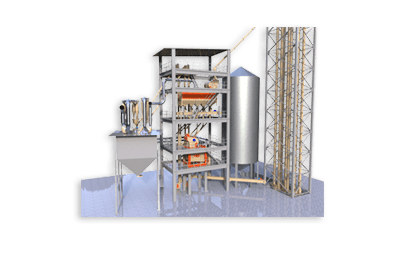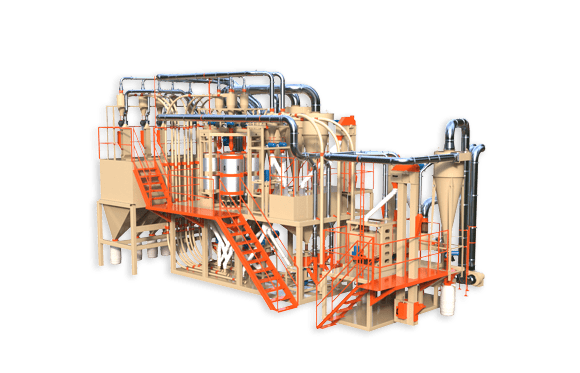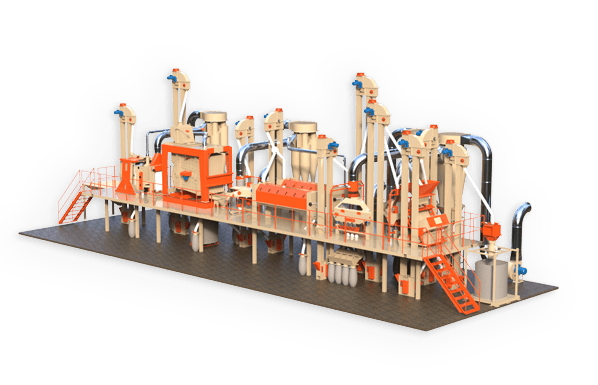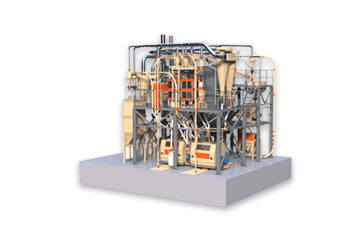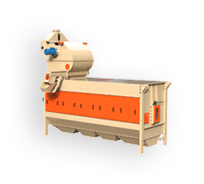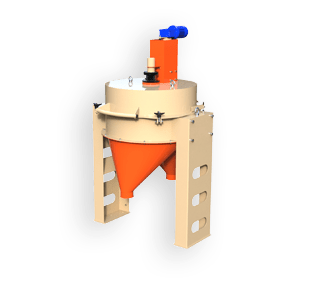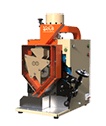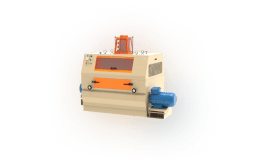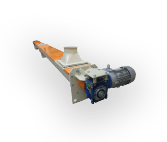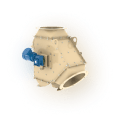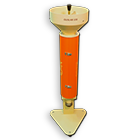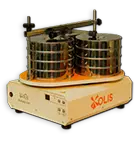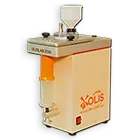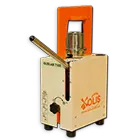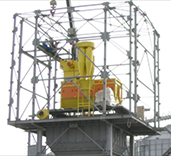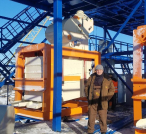Practice of improving the production technology of pea groats.
O.P. Vereshchynskyi, general director, doctor of technical sciences
O.V. Shevchenko, head of the development and implementation department of OLYS LLC
The development of the consumer market of goods determines the current directions for improving the technologies of their production. Thus, the analysis of the current conjuncture of the grain market reveals a steady advantage in the demand for knee peas.
The traditional technology for the production of pea groats involves the production of split peas together with whole peas in a set proportion. An increase in the yield of knee peas, let alone the production of only knee peas, is not provided by traditional technology. In the arsenal of existing technological operations and machines for their implementation, there are no special means of solving the specified problem. But practice shows that the development and use of new equipment allows you to effectively solve the specified need, as well as to ensure a significant reduction of the processing technology and decrease its energy intensity.
According to the traditional technology [1, 2], A1-ZSHN type machines are used for shelling peas. The necessary technological efficiency of their work is ensured by the preliminary fractionation of the pea grain with processing of the coarse and fine fractions separately on two successive peeling and grinding systems. At the same time, the test of modern shelling machine of the “Cascade” design revealed the possibility of effective implementation of the pea shelling operation without prior fractionation and on one peeling-grinding system.
Checking the sorting efficiency of shelled peas obtained without prior fractionation of the grain showed that the use of sieves with elongated holes of size 4.0×20 and even 4.2×20 reliably ensures the complete separation of knee peas into the passing fraction and makes it impossible for small whole peas to enter its composition.
Thus, the introduction of shelling and grinding machines of the “Cascade” design into the pea processing technology makes it possible to completely exclude the fractionation operation, and instead of four shelling systems, only one can be provided.<.p>
To grind whole peas on the cotyledon, a Machine of the MKG brand was developed with a centrifugal impact type The named machine consists of a rotor, which ensures acceleration of the grain to a certain speed, and a reflecting ring with a surface of a special profile. Tests of such a machine showed that the intensification of pea crushing due to an increase in the speed of rotation of the rotor necessarily entails an increase in the content of flour and crumbs. Therefore, for each batch of peas, it is necessary to choose the most suitable grinding mode, sort the resulting mixture, and send the selected whole peas for re-grinding.
Traditional pea processing technology [1, 2] includes polishing of shelled peas, both whole and split. Carrying out such an operation somewhat improves the marketable appearance of cereals, but does not affect the increase in its nutritional value and leads to an increase in cost. Under such conditions, the polishing of pea kernels is not a prerequisite for their successful sale and, as practice shows, in most cases, it can be excluded.
The specified innovations were fully implemented during the development of the technological scheme (Fig. 1) for the production of pea groats for the low-capacity universal groat mills “OPTIMATIK-K”.The named granulators with a productivity of 7 and 15 t/day are serially produced by OLYS LLC using a patent of Ukraine for the invention [4]. The experience of a number of such productions shows that the actual yield when obtaining whole peas and knee peas is ensured within 83-85%, and when obtaining only knee peas – 80-82% in relation to the grain after grain cleaning. At the same time, the cost of electricity for processing one ton of grain is 32-34 kWh.
According to the scheme shown in fig. 1 it is possible to create processing of peas of any productivity using equipment of greater capacity that we have in our arsenal.
As you know, cotyledons in pea grains make up 90-94% of its mass [2], therefore, even taking into account the above results, further search for means of increasing the yield of pea grains is relevant and promising.
Literature:
1. Kroshko G.D. Rules of organization and management of the technological process at grain factories. [Text] / G.D. Kroshko [etc.]. – K.: Vipol, 1998. – 145c.
2. Shutenko E.I. Cereal production technology [Text] / E.I. Shutenko, S.M. Soc. – K.: Education of Ukraine, 2010. – 272 p.
3. Universal granulator “OPTIMATIK-K-07” and “OPTIMATIK-K-15” [E-mail. resource]. – Access mode: www.olis.com.ua
4. Stalemate. No. 99424 Ukraine, B02B 3/02 (2006.01). Installation for the production of knee peas [Text] / O.P. Vereshchynskyi; patent owner O.P. Vereshchynskyi – No. 2011 13880; statement 25.11.2011; published 10.08.2012; Bul. No. 15. – 4c


